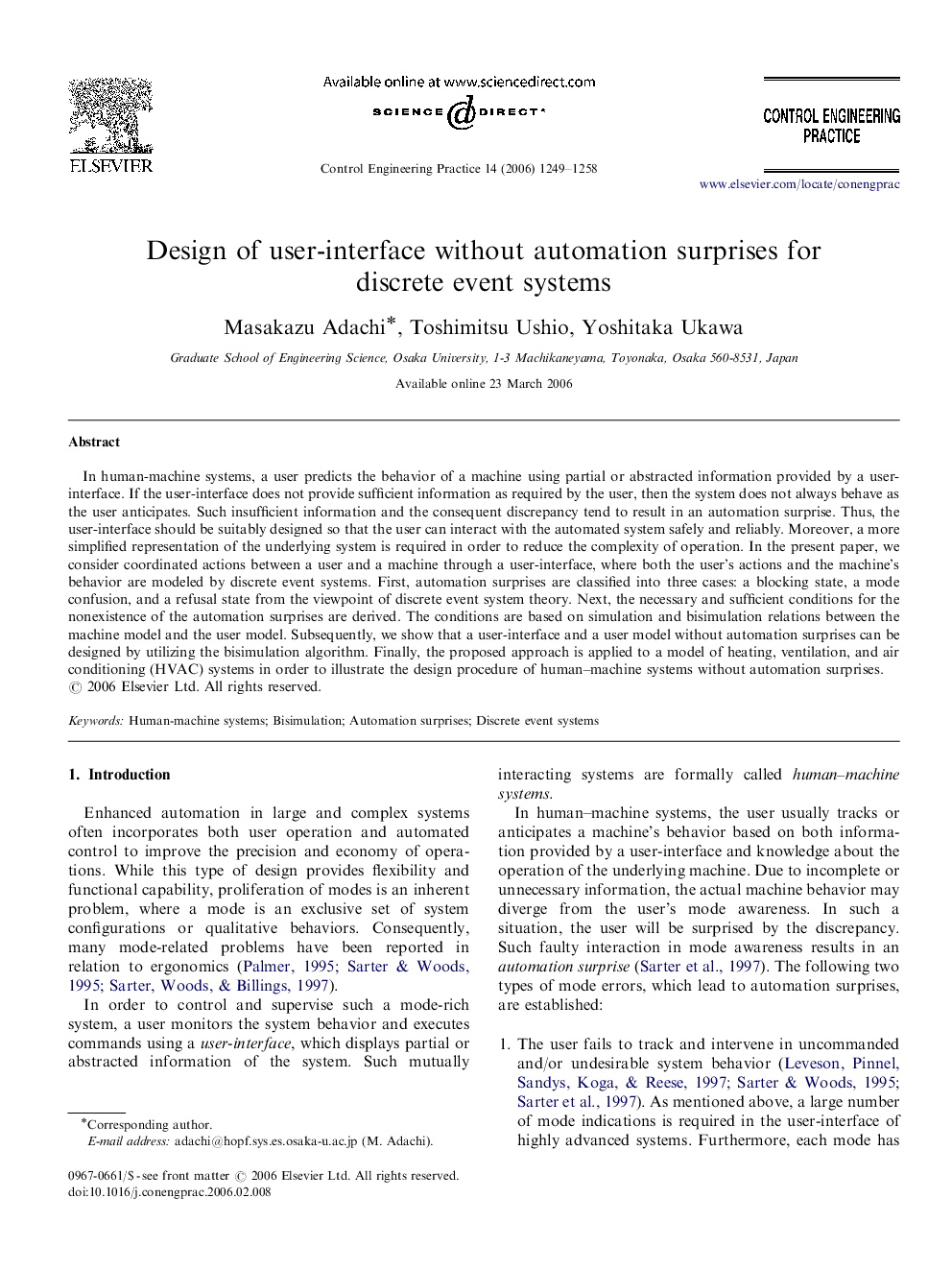| Article ID | Journal | Published Year | Pages | File Type |
|---|---|---|---|---|
| 700694 | Control Engineering Practice | 2006 | 10 Pages |
In human-machine systems, a user predicts the behavior of a machine using partial or abstracted information provided by a user-interface. If the user-interface does not provide sufficient information as required by the user, then the system does not always behave as the user anticipates. Such insufficient information and the consequent discrepancy tend to result in an automation surprise. Thus, the user-interface should be suitably designed so that the user can interact with the automated system safely and reliably. Moreover, a more simplified representation of the underlying system is required in order to reduce the complexity of operation. In the present paper, we consider coordinated actions between a user and a machine through a user-interface, where both the user's actions and the machine's behavior are modeled by discrete event systems. First, automation surprises are classified into three cases: a blocking state, a mode confusion, and a refusal state from the viewpoint of discrete event system theory. Next, the necessary and sufficient conditions for the nonexistence of the automation surprises are derived. The conditions are based on simulation and bisimulation relations between the machine model and the user model. Subsequently, we show that a user-interface and a user model without automation surprises can be designed by utilizing the bisimulation algorithm. Finally, the proposed approach is applied to a model of heating, ventilation, and air conditioning (HVAC) systems in order to illustrate the design procedure of human–machine systems without automation surprises.
